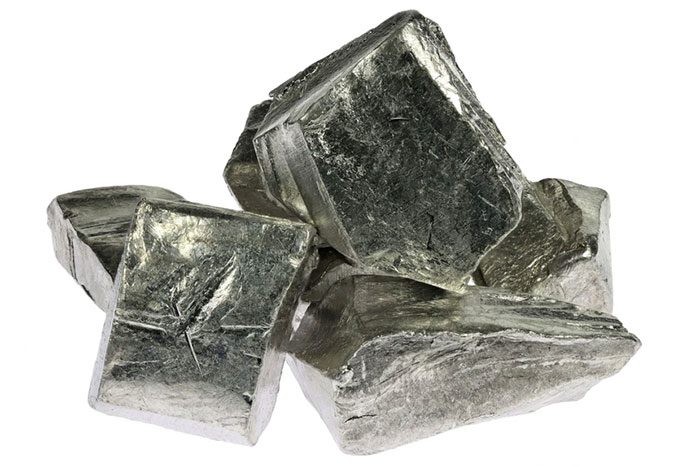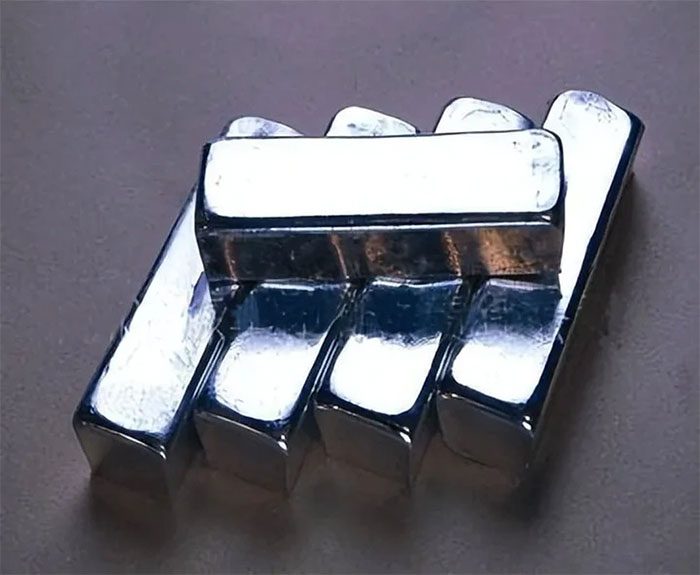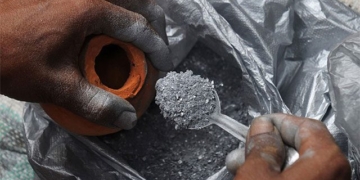Indium, a name that may not be unfamiliar to most people, but few understand its value and significance.
History of Indium Discovery
Indium was discovered in 1863 by German chemist Ferdinand Reich at the Freiberg School of Mines in Germany. Reich was studying a sample of zinc ore that he believed might contain a newly discovered element, thallium. After roasting the ore to remove most of the sulfur, he added hydrochloric acid to the remaining materials. He then observed a yellow solid appearing.
He suspected this might be the sulfide of a new element, but due to his color blindness, he enlisted fellow German chemist Hieronymous T. Richter to examine the spectrum of the sample. Richter noticed a brilliant purple line that did not match the spectrum of any known element.
Working together, the two scientists isolated a new elemental sample and announced their discovery. They named the new element indium, derived from the Latin word “indicum,” meaning purple. Unfortunately, their relationship became strained when Reich learned that Richter had claimed the discovery for himself, according to the Royal Society of Chemistry (RSC).

Over a century after the discovery of indium, the element remains relatively obscure as no one knew what to do with it. Today, indium is vital for the global economy in the form of indium tin oxide (ITO). This is because ITO remains the best material to meet the growing demand for LCD (liquid crystal display) in touchscreen devices, flat-screen TVs, and solar panels.
Why is Indium More Expensive than Gold?
Indium is a rare metal that is more expensive than gold for two main reasons: scarcity and technological demand. Scarcity is one of the primary reasons that indium’s price exceeds that of gold. Indium is one of the rarest elements on Earth, and its abundance in the Earth’s crust is very limited.
According to the United States Geological Survey (USGS), it is the 61st most abundant element in the Earth’s crust, significantly lower than more common metals like iron and copper. Due to the scarcity of indium, its supply is severely limited, making this precious metal more expensive to acquire. The imbalance between supply and demand has driven up the price of indium.

Indium is a highly important metal material with many applications in modern technology. In recent years, the price of indium has surpassed that of gold, raising many concerns and questions.
At the same time, technological demand is also a significant factor contributing to the high price of indium. Indium has numerous applications in modern technology and electronics. It is widely used in LCD screens—the core component of many electronic devices today, including mobile phones, TVs, and computers.
Indium has become one of the primary materials for liquid crystal displays due to its good electrical conductivity and transparency. Indium is only present in small amounts during production, leading to a sharp increase in demand for indium in the LCD industry. For these tech companies, the high price of indium is not a barrier, as the valuable properties of LCDs far outweigh the cost of indium.

Indium plays a vital role in the electronics industry, especially in products such as tablets, smartphones, and LCD screens. These products are already crucial in modern life, leading to high demand for indium. Due to the limited supply of indium and high production costs, indium prices in the market remain high.
Indium is also widely used in fiber optic communications, solar panels, and other fields. In the fiber optic communication sector, indium is used as a dopant in fiber amplifiers to enhance optical signal transmission. Indium compounds in solar panels have good photovoltaic properties and can efficiently convert solar energy into electrical energy. Demand for indium in these areas continues to rise, increasing its value.

Most commercial indium comes from Canada, totaling about 75 tons per year. Estimated reserves of the metal exceed 1,500 tons. According to Lenntech, arable land is sometimes found to be richer in indium than non-arable land, with some levels reaching up to 4 ppm.
|
Indium is a shiny, soft, and malleable silver metal that can be scratched with a fingernail and bent into almost any shape. In nature, indium is quite rare and is almost always found in trace amounts within other minerals—especially zinc and lead—from which it is typically obtained as a byproduct. According to the Royal Society of Chemistry, its estimated concentration in the Earth’s crust is 0.1 parts per million (ppm)—slightly more than silver or mercury. Indium has a low melting point for metals: 313.9 degrees F (156.6 degrees C). At temperatures above this, it burns with a purple or violet flame. The name indium is derived from the bright violet light it exhibits in the spectroscope. |


















































